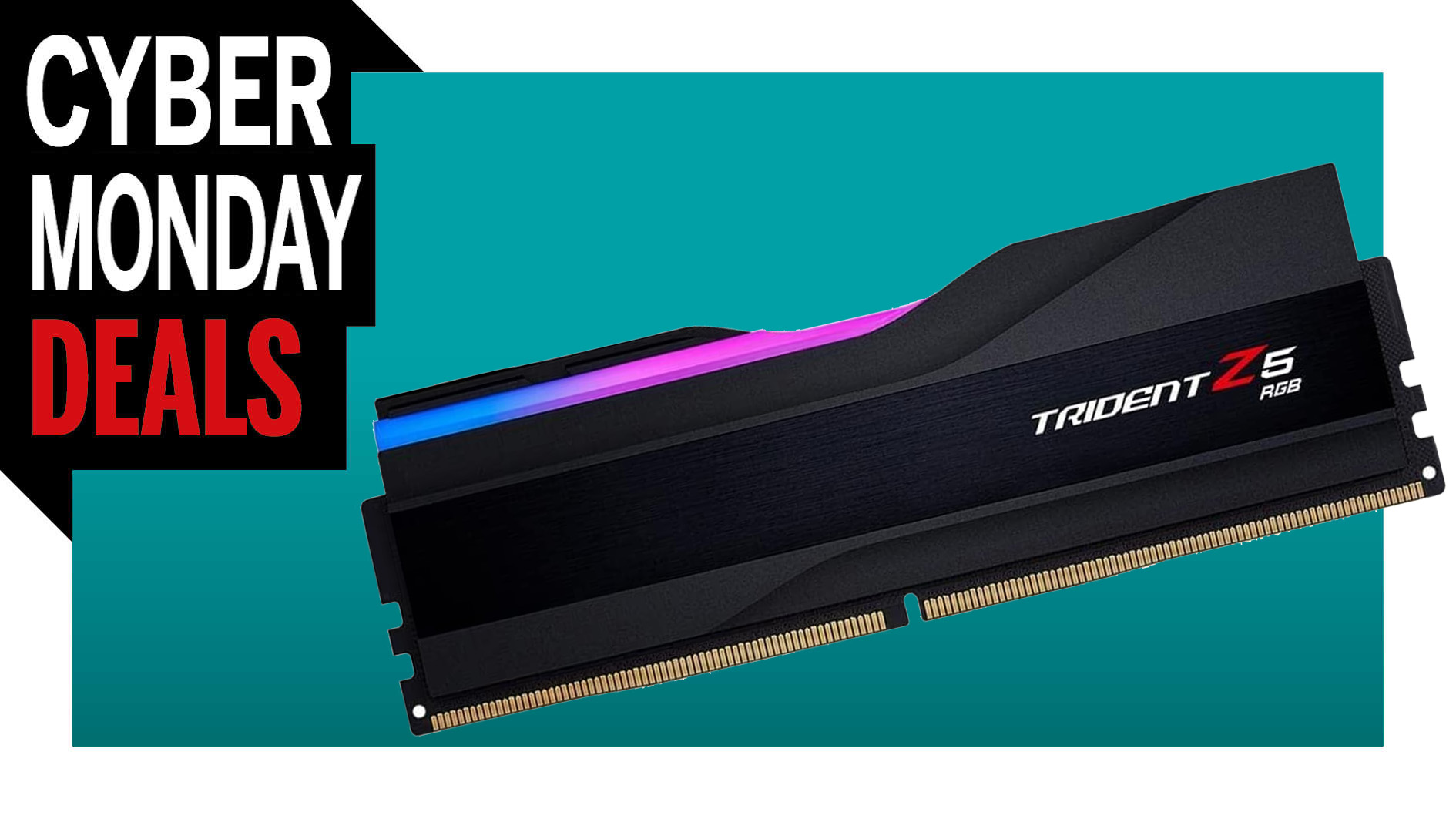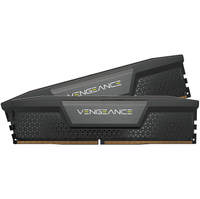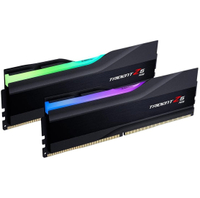DDR5 RAM is a lot more affordable this Cyber Monday
Move aside DDR4, we're chatting cheap DDR5 RAM for Cyber Monday.

Corsair Vengeance | DDR5 | 32GB (2x 16GB) | 5,600MHz | CL36 | $224.99 $144.99 at Amazon (save $80)
If you've just bought one of Intel's latest 12th/13th Gen chips, or AMD's Ryzen 7000-series, you could pick a motherboard with support for the latest memory tech, DDR5. These offer better bandwidth for lower voltage than most DDR4 kits, but admittedly the gains for gaming are fairly slim. Still, if you're committed to a high-end build, this Vengeance RAM kit will see you right.
G.Skill Trident Z5 RGB | DDR5 | 32GB (2x16GB) | 6,000MHz | CL36 | $209.99 $189.99 at Amazon (save $20)
This is probably the DDR5 kit I'd actually buy right now. Yes, it's partially because I'm a sucker for flashing lights needlessly stuck to my PC components, but also because it's a darn quick kit with a decent CAS latency in the mid-30s.
RAM is historically cheap right now, though it's mostly been DDR4 RAM keeping average prices low. More recent DDR5 RAM kits, which are now used by both Intel and AMD's current CPU generations, have tended to fall on the pricier side of things, made to look even worse by dramatically cheap DDR4 kits.
But that might be changing, and quickly. Thanks to the latest round of Cyber Monday RAM deals, I'm spotting quite a few DDR5 RAM kits going for much less cash than I had expected.
- We're curating all the best Cyber Monday PC gaming deals right here.
For example, you can pick up a 32GB kit of Corsair's Vengeance DDR5 RAM for $134.99 right now. That's for a 5,200MHz (effective) pair of DIMMs. If you want to bump that to a healthy 5,600MHz (effective), it's just $10 more. I do recommend the slightly pricier 5,600MHz kit, as it also comes with a lower CAS latency.
It wasn't that long ago that roughly equivalent DDR4 kits were going for as much. From the data we're looking at, at the beginning of 2022 you would've had to spend around $140 to grab a 32GB kit of Corsair Vengeance DDR4 rated to 3,600MHz (effective).
The shift from DDR4 to DDR5 was bound to happen at some point soon. Like I say, Intel and AMD have both adopted DDR5 with their 12th/13th Gen and Ryzen 7000-series CPUs, respectively, although Intel does still offer the option for both DDR4 and DDR5 with its chipsets. If these prices are sustained in the new year, I can see DDR5 swiftly becoming the de facto option for new gaming PC builds.
Right now, it's a bit of a toss-up as to which to choose for your PC build. DDR4 kits are still so cheap, and in the Cyber Monday RAM deals we've seen 32GB of DDR4 from Teamgroup going for as little as $69.99. We're talking half the price of an equivalent DDR5 kit. But that's an especially low price, and if we're going to see DDR4 and DDR5 sort of meet in the middle as production of one wanes and the other increases, that means just one thing: now's the time to buy DDR4 if you're waiting.
Meanwhile, DDR5 will probably get cheaper as time goes on, and the spec will improve gradually over time, too. That means these higher latency, lower speed kits around today will give way to even faster options sometime in the future, much like the gradual increase in performance with DDR4—something to consider if you don't want to buy some just yet.
If you're wondering about what the move to DDR5 might get you, let's run through the benefits. As you might have noticed, DDR5 kits run at a much higher effective clock speed than DDR4, but to make up for that they do have higher CAS latencies. Don't be put off by those higher CAS latencies, though. It's all a careful balancing act of speed and latency for performance, and even a DDR5 kit with a high CAS latency will be relatively equal to some of today's speedier DDR4 kits in real-world terms.
To quote Alan Dexter's DDR5 explainer: "To throw a brief bit of maths at things, the real-world CAS latency is measured as (CAS Latency x 2,000)/Memory Speed, which in the case of the DDR5-5600 CL28 kit comes in at 10ns. For reference, that's the same as DDR4-3200 with a CAS latency of 16."
That said, always do check the CAS latency to make sure it's not too high versus the clock speed. Somewhere in the 30s is decent, but you can find sub-30 kits nowadays, though none on sale as far as I have seen. They're pretty new to the scene, whereas you'll find a lot of kits rocking a CAS latency of 40 as that's been more of a standard for the first wave of DDR5.
G.Skill Trident Z5 RGB | DDR5 | 32GB (2x16GB) | 6,400MHz | CL32 | $249.99 $219.99 at Amazon (save $30)
G.Skill have been really pushing their DDR5 RAM kits. This isn't quite one of the company's sub-30 CAS latency kits, but it's pretty darn close. And with a speedy 6,400MHz effective clock it's definitely the choice of high-end gaming systems with some budget to spare on performance.
So, what else does DDR5 get you? These kits actually regulate their own voltage, which doesn't sound like much but that's how DDR5 will aim towards speeds completely unfathomable on DDR4 RAM. Similarly, this can unlock a little more headroom for your own memory overclocking if that's the sort of thing you're looking to do. DDR5 also supports a new XMP standard, XMP 3.0, which unlocks a few extra memory profiles stored directly on the RAM. AMD also has an equivalent technology in AMD EXPO.
But it must be said there's no particularly immense new feature front and centre for gamers when it comes to DDR5, just a wholly faster package altogether with some clever upgrades. It's more of a holistic upgrade for your system, and that's why it's not something we absolutely recommend you have to install in your machine today.
At some point, however, DDR5 RAM will be the only option at a reasonable price, and it looks like that day is creeping up on us fast.
The biggest gaming news, reviews and hardware deals
Keep up to date with the most important stories and the best deals, as picked by the PC Gamer team.

Jacob earned his first byline writing for his own tech blog. From there, he graduated to professionally breaking things as hardware writer at PCGamesN, and would go on to run the team as hardware editor. He joined PC Gamer's top staff as senior hardware editor before becoming managing editor of the hardware team, and you'll now find him reporting on the latest developments in the technology and gaming industries and testing the newest PC components.



